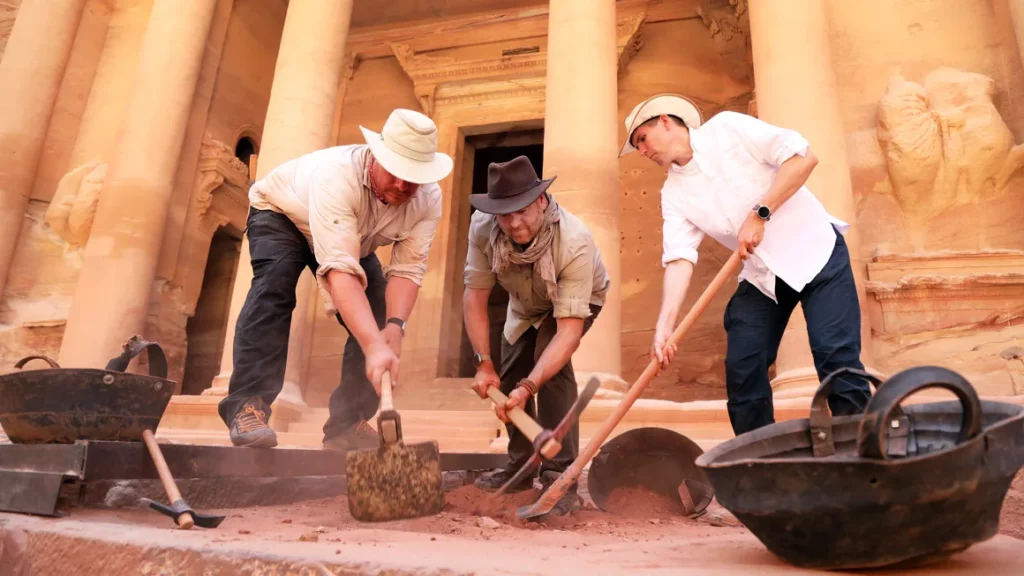Archaeologists have unearthed an ancient tomb beneath the iconic Treasury in Petra, Jordan, revealing at least 12 skeletons along with artifacts dating back over 2,000 years. This significant find may represent one of the largest collections of human remains discovered in Petra.
Excavation Details
The excavation was led by Dr. Pearce Paul Creasman from the American Center of Research. Following years of speculation about additional burial sites beneath the Treasury, ground-penetrating radar was employed to confirm the presence of the tomb.
Significance of the Discovery
This tomb provides invaluable insights into the lives of the Nabataeans, an ancient civilization that thrived in the region from the 4th century BC to AD 106. The intact grave goods found alongside the skeletons, including bronze and ceramic artifacts, offer a rare glimpse into their burial practices.
Artifacts and Preservation
Among the artifacts discovered was a ceramic vessel resembling the legendary Holy Grail. While the artifacts are well-preserved, the human remains show signs of deterioration, likely due to the humid environment and seasonal flooding in Petra.
Research Implications
This find is particularly important as it may help researchers understand the social structure of the Nabataean people. The similarities in burial practices between different tombs suggest a more egalitarian society than previously thought.
Conclusion
The discovery of this tomb beneath the Treasury in Petra, Jordan, underscores the rich archaeological heritage of the area. As research continues, it is expected that more details about the individuals buried there will emerge, further unlocking the mysteries of this ancient civilization.

